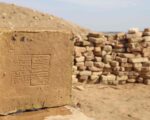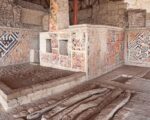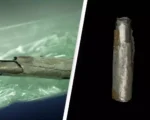Archaeologists have uncovered significant Roman-era artifacts in the Cova de les Dones cave, located in eastern Spain. Among the discoveries are a corroded coin and 15 inscriptions, which date back nearly 1,900 years. These findings suggest the cave was used as a site for rituals during the Roman occupation of the Iberian Peninsula. The coin, which dates to the reign of Emperor Claudius (A.D. 41-54), was found embedded in a fissure between a stalactite and the ceiling, possibly placed there as an offering. The inscriptions carved into the rock further support the theory that the cave was seen as a sacred or ceremonial space.
The discovery of these Roman artifacts is significant, as it offers new insights into the use of natural caves in the Roman world. The location of the coin and the intricate rock carvings suggest that Cova de les Dones may have served as a sanctuary or a place of worship. While the exact meaning of the inscriptions remains unclear, experts believe they may hold clues to the spiritual and cultural practices of the time. The coin itself, a rare find in such a context, further reinforces the idea of the cave’s ritualistic significance.
Cova de les Dones is no stranger to archaeological discoveries. Previous excavations have revealed evidence of human activity stretching back to prehistoric times. The cave has yielded Iron Age ceramics and an array of prehistoric rock art, including depictions of animals like aurochs and stags. One study in 2023 documented over 110 cave paintings, with some believed to be over 24,000 years old, providing a rare glimpse into early human life. These ancient artworks, combined with the more recent Roman-era finds, highlight the cave’s long history as a place of both daily life and spiritual significance.
This latest discovery underscores the ongoing importance of Cova de les Dones in understanding the cultural evolution of the Iberian Peninsula. The cave’s role as a site of worship and its connection to both prehistoric and Roman periods make it a crucial piece in the puzzle of Spain’s ancient past. Archaeologists are continuing to study the inscriptions and other findings, which may yet reveal more about the rituals and practices that took place in this unique location.


















